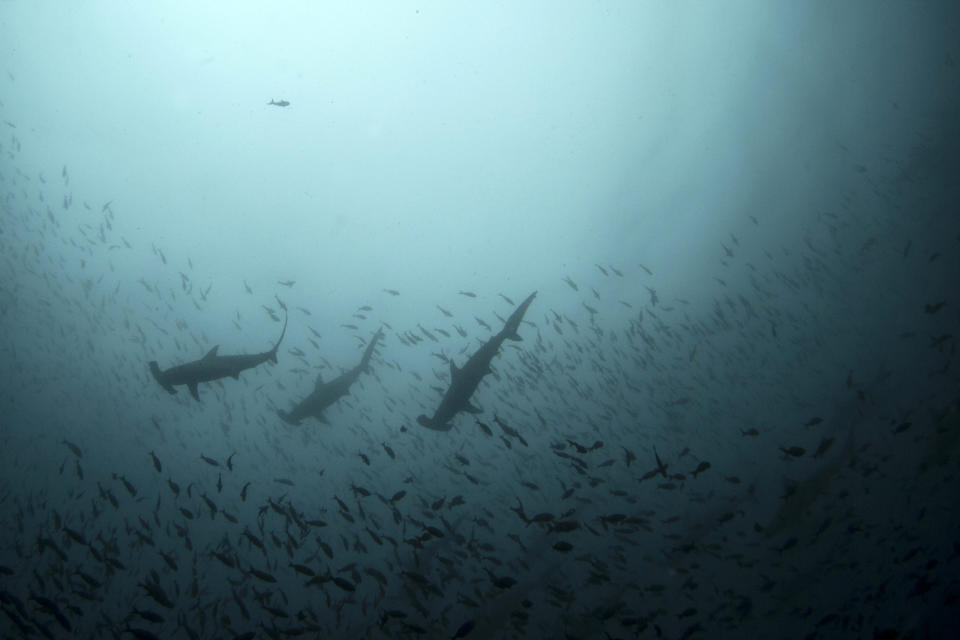Shark captured by research vessel ‘could be 512 years old’, researchers believe

A shark captured by a research vessel may have been born when James I was on the throne of England – and when William Shakespeare was still alive.
Scientists believe that Greenland sharks can live to up to 400 years old – and one specimen captured by a research vessel could be up to 512.
Previously, the oldest known vertebrate was the Bowhead whale, which can live to up to 211 years.
The specimen was caught in the North Atlantic and analysed by scientists, who believe that it could be up to 512 years old.
MOST POPULAR ON YAHOO UK TODAY
‘Miracle dog’ survives after jumping off 30ft bridge in Glasgow into rocky riverbed
Tourist group slammed after building makeshift cooking stove from Great Wall of China bricks
Russia is planning to expand its nuclear arsenal to 8,000 bricks
Volunteers patrol London parks after six swans are found ‘stabbed and beheaded’
Britain’s favourite Quality Street and Roses have been revealed ahead of Christmas
Professor Kim Praebel said at the University of Exeter, ‘The longest living vertebrate species on the planet has formed several populations in the Atlantic Ocean.
A post shared by Julius Nielsen (@juniel85) on May 10, 2017 at 1:35am PDT
A post shared by Julius Nielsen (@juniel85) on Aug 4, 2017 at 12:30am PDT
’This is important to know, so we can develop appropriate conservation actions for this important species.’

Lead researcher Julius Nielsen of the University of Copenhagen said, ‘We only expected that the sharks might be very old.
‘But we did not know in advance. And it was, of course, a very big surprise to learn that it was actually the oldest vertebrate animal.’
The researchers write, ‘Our results show that the Greenland shark is the longest-lived vertebrate known, and they raise concerns about species conservation.’

 Yahoo Movies
Yahoo Movies 

